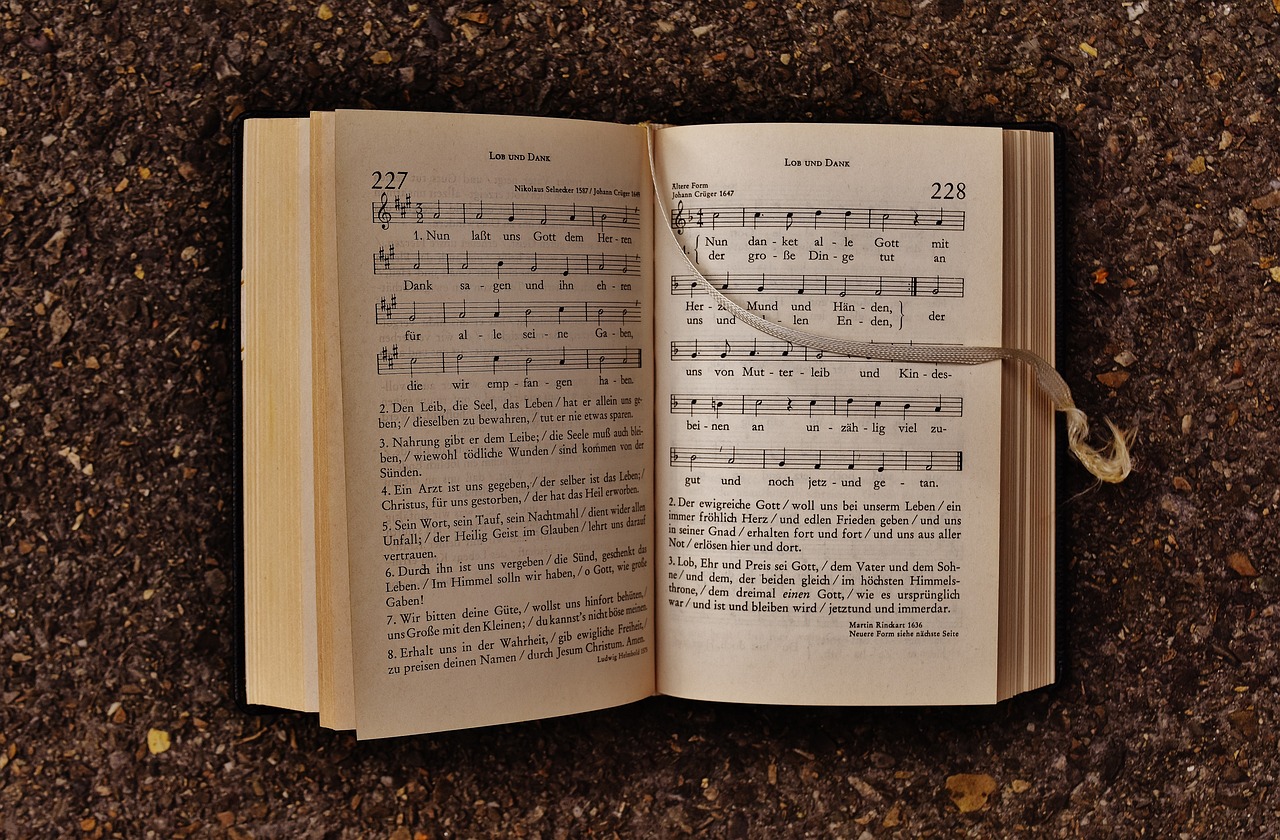Title: It is well with my soul
Author: Horatio Spafford
1 When peace like a river, attendeth my way,
When sorrows like sea billows roll;
Whatever my lot, Thou hast taught me to say,
It is well, it is well with my soul.
Chorus: It is well, with my soul,
It is well, with my soul,
It is well, it is well with my soul.
2 Though Satan should buffet, though trials should come,
Let this blest assurance control,
That Christ hath regarded my helpless estate,
And hath shed His own blood for my soul.
3 My sin, O the bliss of this glorious thought!
My sin, not in part but the whole,
Is nailed to the cross, and I bear it no more,
Praise the Lord, praise the Lord, O my soul!
4 And Lord, haste the day when my faith shall be sight,
The clouds be rolled back as a scroll;
The trump shall resound, and the Lord shall descend,
Even so, it is well with my soul.
“It Is Well with My Soul” is one of the most beloved hymns in the Christian tradition, and its story is deeply intertwined with themes of faith, loss, and divine comfort. Written by Horatio Spafford in 1873, the hymn has endured as a source of inspiration and solace to millions of people around the world, transcending its historical context to become a timeless expression of peace and hope amidst suffering.
The Background of Horatio Spafford
Horatio Gates Spafford was born on October 20, 1828, in North Troy, New York. He was raised in a devout Christian family and went on to become a successful lawyer and businessman in Chicago. Spafford was known for his generosity and his active participation in church life, and he became particularly close to his family and community. In the 1860s, he married Anna Larsen, and together they had four daughters: Anna, Margaretha, Elizabeth, and Tanetta.
However, their lives would be marked by a series of profound tragedies that would ultimately lead to the creation of one of the most famous hymns in Christian history.
The Tragedies Leading to the Hymn
The Great Chicago Fire of 1871
In 1871, the Great Chicago Fire ravaged the city, leaving widespread destruction in its wake. Spafford’s real estate investments were among those that were lost in the fire. The devastation of his financial fortune was significant, but this hardship would prove to be only the beginning of a series of personal losses.
The Loss of His Daughters
Two years later, in 1873, Horatio and Anna Spafford planned a family trip to Europe. Spafford had business commitments that kept him in Chicago, so he arranged for his wife and daughters to travel ahead on the SS Ville du Havre, a French ocean liner. Tragically, during the voyage, the ship collided with another vessel, and within minutes, the ship sank. More than 200 people perished, including all four of Spafford’s daughters. His wife, Anna, survived and was found clinging to a piece of wreckage.
Upon arriving in Cardiff, Wales, Anna sent a telegram to Horatio with the simple but devastating words: “Saved alone.”
This catastrophic loss marked an incredibly dark moment in Spafford’s life. After receiving the news, he immediately set sail to join his wife in Europe. It is believed that during this voyage, as his ship passed over the spot where the SS Ville du Havre had sunk, Horatio Spafford wrote the words to the hymn “It Is Well with My Soul”.
The Creation of the Hymn
The hymn was written in the midst of Spafford’s grief, but it expresses an extraordinary sense of peace, faith, and surrender to God’s will despite the immense suffering he had endured. The lyrics are both a declaration of faith and a source of comfort for others who may be experiencing similar loss or distress.
The hymn’s opening words, “When peace like a river, attendeth my way, when sorrows like sea billows roll,” juxtapose images of peace and sorrow. Spafford begins by acknowledging that life brings both tranquility and turmoil, but he affirms that regardless of his circumstances, he has learned to say, “It is well with my soul.” This profound expression of trust in God’s providence is the core message of the hymn.
The Lyrics of the Hymn
The hymn, composed of four verses, expresses different aspects of faith, salvation, and hope. Each verse is deeply personal and reflects Spafford’s emotional and spiritual journey after experiencing such deep personal loss.
Verse 1: Peace Amidst Sorrow
“When peace like a river, attendeth my way,
When sorrows like sea billows roll;
Whatever my lot, Thou hast taught me to say,
It is well, it is well with my soul.”
The first verse contrasts two powerful forces: peace and sorrow. The phrase “peace like a river” conjures an image of a calm and flowing stream, representing tranquility and divine peace. In contrast, “sorrows like sea billows roll” evokes the image of towering, overwhelming waves of grief and hardship. The verse acknowledges that life involves both peace and sorrow but that, through faith, one can find peace even amid sorrow. The declaration “It is well with my soul” conveys an attitude of surrender and trust in God, no matter the circumstances.
Verse 2: Assurance in Christ’s Sacrifice
“Though Satan should buffet, though trials should come,
Let this blest assurance control,
That Christ hath regarded my helpless estate,
And hath shed His own blood for my soul.”
In the second verse, Spafford acknowledges that trials and spiritual challenges are part of life. The phrase “Satan should buffet” refers to the spiritual attacks and temptations believers might face, while “though trials should come” acknowledges the inevitable struggles of life. Despite these challenges, the verse emphasizes the believer’s assurance in Christ’s love and sacrifice. “Christ hath regarded my helpless estate” speaks to the belief that Christ sees and understands human suffering, and “hath shed His own blood for my soul” points to the atonement—Christ’s sacrifice on the cross to redeem humanity from sin.
Verse 3: The Joy of Forgiveness
“My sin, O the bliss of this glorious thought!
My sin, not in part but the whole,
Is nailed to the cross, and I bear it no more,
Praise the Lord, praise the Lord, O my soul!”
The third verse expresses the believer’s joy in the full forgiveness of sin. The phrase “O the bliss of this glorious thought!” celebrates the realization that all sins—“not in part but the whole”—are forgiven through the death of Christ on the cross. The line “Is nailed to the cross, and I bear it no more” reflects the Christian doctrine of salvation: the complete removal of sin through Christ’s atoning death. The response to this is an outpouring of praise: “Praise the Lord, praise the Lord, O my soul!”
Verse 4: The Hope of Christ’s Return
“And Lord, haste the day when my faith shall be sight,
The clouds be rolled back as a scroll;
The trump shall resound, and the Lord shall descend,
Even so, it is well with my soul.”
The final verse looks forward to the Second Coming of Christ and the ultimate fulfillment of Christian hope. The phrase “when my faith shall be sight” refers to the time when faith in Christ will no longer be necessary, as believers will see Him face to face. The “clouds be rolled back as a scroll” alludes to imagery from the Book of Revelation (Revelation 6:14) when the return of Christ is described. The verse ends with a reaffirmation of the peace and hope that sustains the believer: “Even so, it is well with my soul.”
Musical Composition
While Horatio Spafford wrote the lyrics, the music for “It Is Well with My Soul” was composed by Philip Bliss, a well-known gospel singer and composer. Bliss was deeply moved by Spafford’s story and the lyrics of the hymn, and he crafted a melody that perfectly complemented the words. The music is slow and reflective, with a sense of reverence that underscores the hymn’s theme of peace amidst suffering.
Bliss’s composition highlights the emotional depth of the lyrics and adds a sense of grandeur to the hymn, making it suitable for both personal reflection and corporate worship.
Theological Themes
“It Is Well with My Soul” is rich in Christian theological themes:
Sovereignty of God: The hymn reflects the belief in God’s ultimate control over all aspects of life, including suffering. Despite the tragedies Horatio Spafford faced, he affirms that God’s plan is good and that His peace transcends understanding.
Atonement: The hymn emphasizes the belief in Christ’s sacrificial death for the forgiveness of sins. The idea that “my sin, not in part but the whole, is nailed to the cross” encapsulates the Christian doctrine of atonement, where Christ’s death redeems humanity from sin.
Hope and Assurance: The hymn points to the Christian hope in eternal life. Spafford’s personal tragedy did not shake his faith in the future hope of resurrection and the return of Christ.
Peace: The central theme of the hymn is peace. Despite the overwhelming sorrow that Spafford endured, he found peace through his faith in God’s sovereignty and Christ’s sacrifice.
Legacy and Enduring Impact
Since its creation, “It Is Well with My Soul” has become one of the most beloved hymns in the Christian tradition. It has been sung at countless funerals, memorial services, and moments of crisis, offering comfort and hope to those who face loss and hardship. The hymn has been translated into many languages and remains a standard in hymnals worldwide.
The story behind the hymn, rooted in personal tragedy and divine grace, has inspired generations of believers to trust in God’s peace in the midst of suffering. It serves as a reminder that, no matter what life may bring, through Christ, it is well with our souls.
In conclusion, “It Is Well with My Soul” is more than just a beautiful hymn; it is a testimony of faith, a reflection of profound personal grief, and a declaration of the peace that comes from trusting in God’s sovereignty. Its timeless message continues to speak to people across the world, offering comfort, hope, and a reminder that in Christ, all is truly well.







